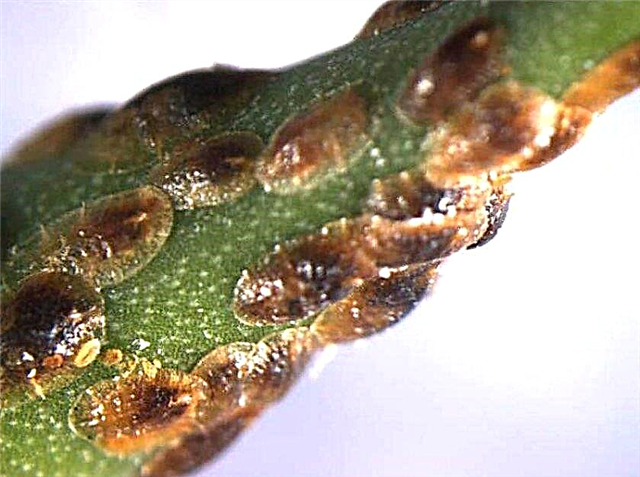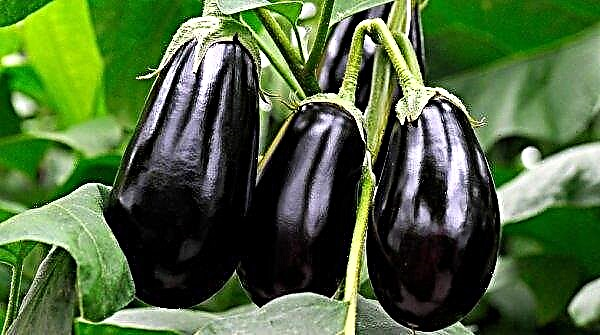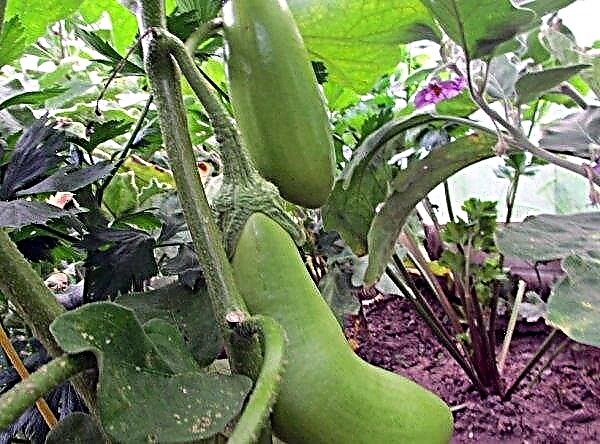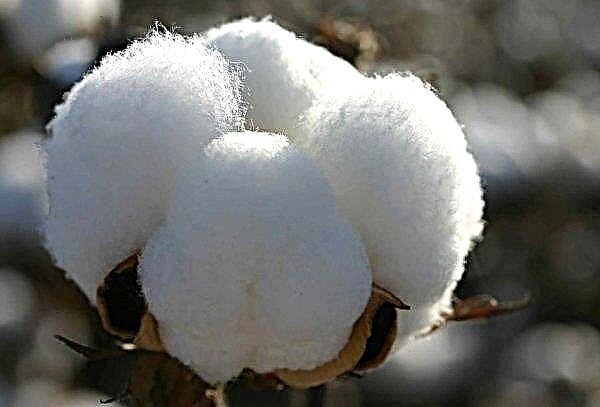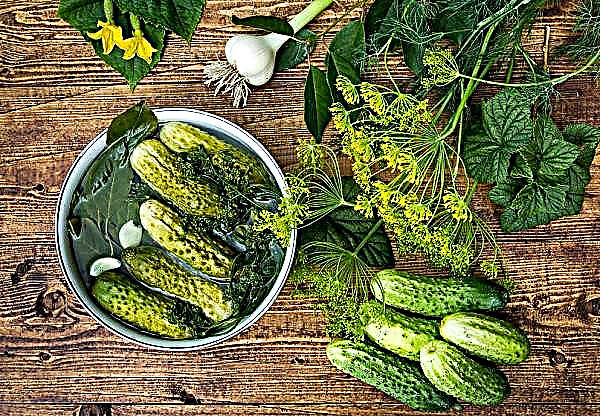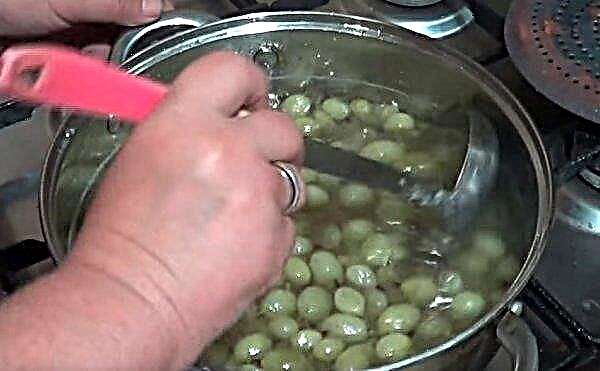Cacti can be found in the house of almost every grower. These unpretentious prickly plants attract not only ease of care and small size, but also a riot of colors during flowering. Today, in our material we will talk about rebucia - a miniature cactus that can be grown at home.
Botanical description of the plant
Rebucia has a lot of species that have their own characteristics in appearance. But there are common features. All of them are united by a spherical stem of dark green color, slightly flattened at the apex. It has many edges (about 11), but they are weakly expressed, often arranged in a spiral. The stem is densely dotted with strong, straight spines of gray or golden brown color.
Did you know? Rod Rebucius got its name in honor of the French winemaker and gardener Pierre Reboux, who in the XIX century. He was also a famous expert on cacti.
They are all of different sizes, and because of this, the cactus becomes like a shaggy ball. Rebucia usually grows up to 5–6 cm in height, but some species can grow up to 10 cm. Flowers on the succulent form in the lower part of the stem. They are funnel-shaped and very large compared to the plant itself. Painted in saturated bright colors. Flower tubes naked.
| Root system | Rod |
| Stem | Globular |
| Flower shape | Funnel-shaped |
| Flower color | Purple, pink, bright red, orange, yellow, white |
| Fruit shape | Berry |
| Fruit color | Yellow |
Main types
The genus Rebucius has about 38 species.
We will describe some of them:
- Tiny rebucia - a tiny plant with a diameter of not more than 50 mm, the stem is spherical, slightly flattened at the crown, light green, the flowers are large, bright red or raspberry.
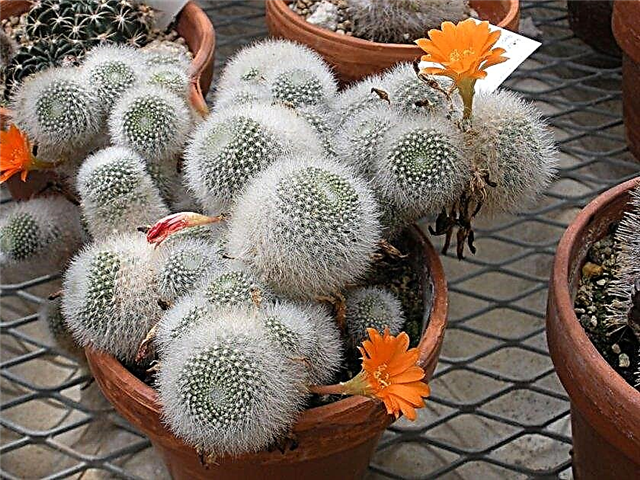
- Dwarf - the stem is cylindrical or oval, dark green, up to 4 cm in height, gives a lot of "children" with roots, blooms in red or pink.

- Senile - has a stem densely dotted with silvery thin and long spines with a diameter of 6-7 cm, the flowers are fiery red with a white core.
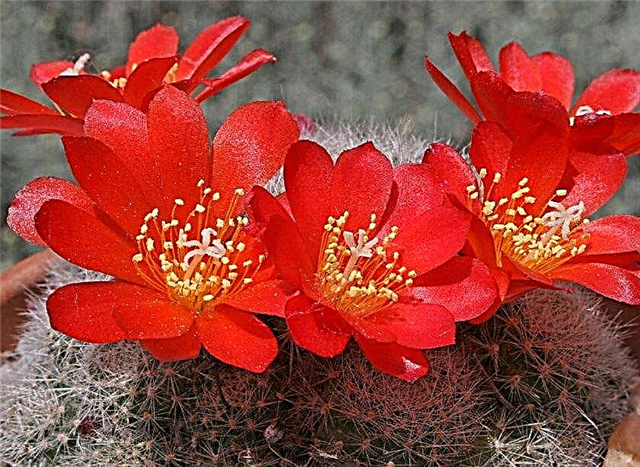
- Heliosa, or solar - the shape of the stem is elongated, blooms with bright orange flowers, gives a lot of “children”, thereby turning into a kind of coral reef.
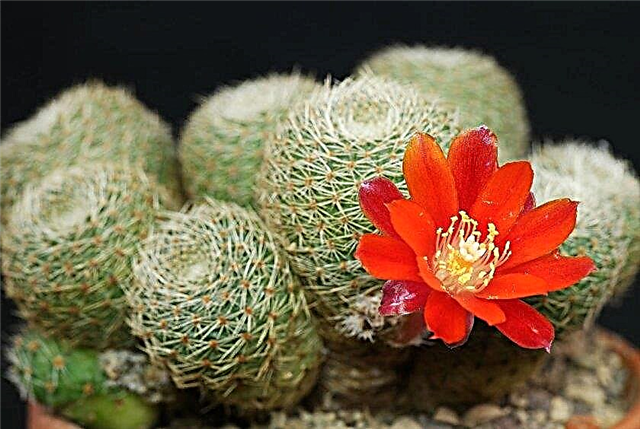
- Albiflora, or white-flowered - in diameter reaches no more than 20 mm, is dotted with small spines similar to villi, the flowers bloom small, pink-white.
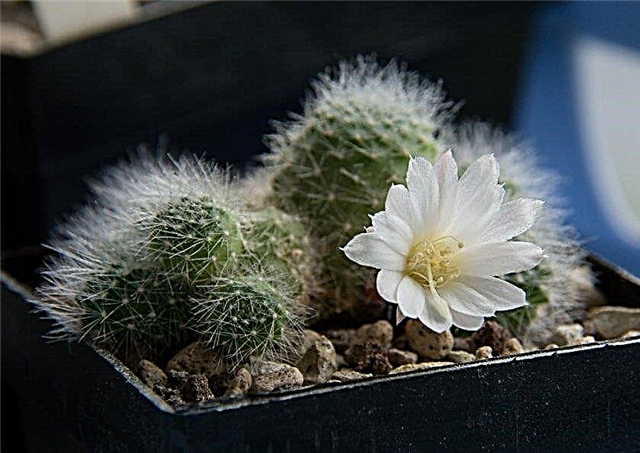
- Kaniguerali - The owner of very long spines, giving the plant a terrifying look. The buds are formed in a circle and, having opened, turn into white or bluish small flowers.

- Marsonera - the stems are narrow, collected in a dense bunch, dotted with spines of two types: hard and soft. The flowers are bright yellow.

House growing conditions
All succulents are unpretentious in care, therefore there are no special difficulties in their cultivation. Although the basic requirements for their content must still be fulfilled. They are not complex, but help the plant to comfortably exist at home.
Important! During the dormant period, it is impossible for the plant to be warm, as this can provoke the active appearance of processes, deformation of the stem. Subsequently, rebutia may not bloom.
Lighting
Rebucia loves sunlight, so they need to be placed on the southern windows. But direct sunlight is fatal to them. Their thin skin quickly begins to crack. Because of this, you should take care of the light shade until the plant gets used to the sun.
Ventilation
Fresh air is essential for the plant. The stagnant air in the room slows down the growth and development of the cactus, deprives it of the opportunity to bloom, so the premises where the succulent is located should be regularly ventilated.
Temperature mode
In order for rebutia to grow well and bloom, the room must have a temperature in the range +25 ... + 35 ° C (spring-summer). In the cold season, the temperature must be lowered to + 7–10 ° С. It is also advisable to arrange small temperature differences during the day and night.
Air humidity
Humidity for a cactus is less important than proper temperature conditions. But if there is a lot of dust in the air and it settles on the plant, then spraying from the spray can not be dispensed with.
Important! In a cactus pot 40% of the total volume should take up drainage.
How to care at home
Proper care of the cactus involves timely watering, fertilizing and transplanting.
Watering
Cactus is irrigated when the substrate in the pot dries. The most active watering should be during the growing season from the moment the first buds appear. For irrigation use water at room temperature. In early autumn, irrigation intensity is reduced, and in winter it is completely stopped. During this period, only those flowers that are no more than two years old need to be moistened. They irrigate them 1-2 times a month with settled water.
Top dressing
Fertilizers are applied from spring to July. For this period of time you need to carry out 3-4 feeding. Use special fertilizers for cactus.
Transfer
Only young plants need frequent transplantation. They are transplanted as soon as the plant fills the pot. Adult specimens are transplanted to a new place every 3 years. The procedure is carried out with the advent of spring. Choose a wide and shallow container with drainage holes and fill it with a "breathing" substrate: turf land, sand, charcoal in equal proportions. You can use a purchased substrate for cacti mixed with sand in a ratio of 3: 1. In the new pot, the substrate is not moistened, nor is the soil in the pot with the plant moistened during transplantation. The transplanted plant put in partial shade.
Breeding
Like most cacti, rebutia propagates by lateral shoots, "children", but you can grow a new flower from the seed. How to do this, we will tell further.
Side shoots
This is a very simple and common way. On any type of rebucia, there are always many “children” who separate without much difficulty. The shoot is dried during the day and planted in a moistened substrate. In this way, cactus is best propagated during the period of active growth (from spring to autumn).
Seeds
The process of propagation by seeds is quite laborious. First you need to wait until the seeds ripen. Then they should be quickly collected and sent for storage in a cool, dry place. Planting should be done only with the advent of spring. For this, a shallow container is prepared and filled with a moistened substrate (a mixture of earth, sand and charcoal in a ratio of 1: 1: 0.5). Be sure to pour drainage to the bottom of the tank. Before planting, seed must undergo a disinfection procedure.
Did you know? Mexican cows are very fond of eating cacti. Farmers remove thorns from them and feed their cows with cacti. In this country, even people eat cacti as a treat in sugar.
Seeds are soaked in a solution of potassium permanganate. The substrate also needs to be disinfected. It must be steamed to destroy the insect larvae. Finished seeds are laid out on the surface of the soil with an interval of 20 mm. Sprinkle on top with soil and cover with a film. The tank is placed in a warm place (+ 17-21 ° C). Crops are regularly watered and aired every day. Sprouted seedlings dive into individual pots, protect from direct rays of the sun, sudden changes in temperature and soil hardening.
Video: Rebucia seed propagation
Growing difficulties
An unpretentious cactus can cause a lot of trouble if you do not follow the rules for caring for it.
Among the common problems associated with inadequate care of the plant are:
- The stalk rots. This often happens in the cold season. The reason for this is abundant watering. During dormancy, the plant does not need to be watered.
- Rotting of the roots. Caused by excess nitrogen in the soil. It is necessary to review the feeding regimen.
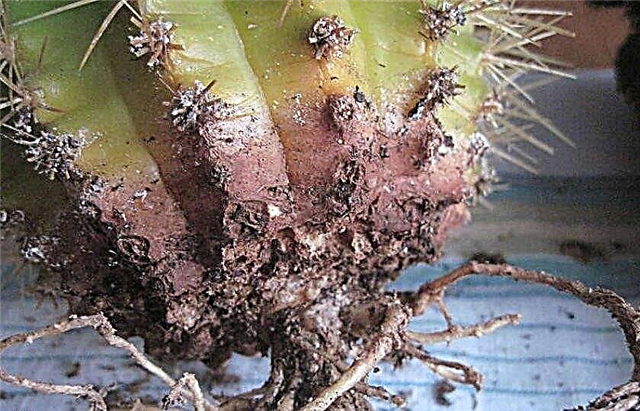
- Cork growths. They arise due to stem damage, low temperatures or insufficient watering in the summer.
- The cactus is withering. Most likely, the temperature conditions were not observed during the rest period. You should adjust them.
Rebucia and pests also attack:
- Spider mite. The flower is covered with brown shiny spots. Such drugs as Actellik, Fitoverm will help to cope with it.
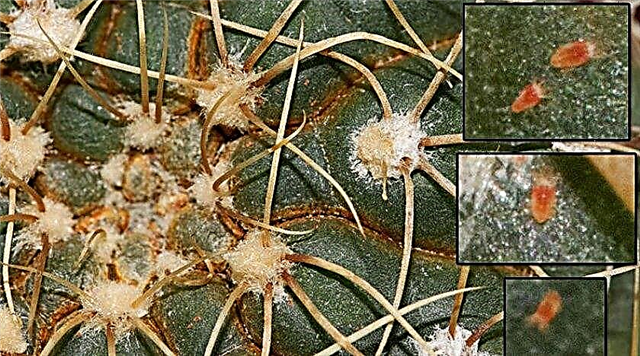
- Shield. Sticky red spots appear on the succulent. You can remove them with a fleece dipped in kerosene, and then treat the plant with the preparations listed above.
